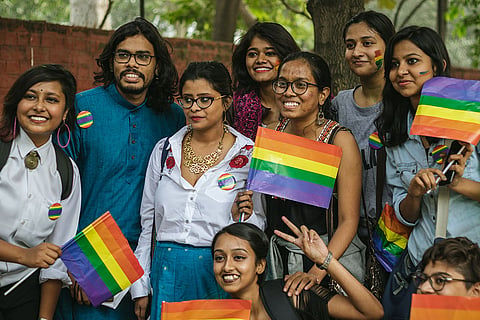In India, where the bedrock of financial security often rests on traditional family structures, a glaring reality persists for the LGBTQIA+ community: they are largely excluded from the very financial protection tools that others take for granted. A recent Kantar report – in its seventh edition, which maps the financial preparedness of urban Indians – illuminates this disparity, revealing a Protection Quotient score of 35 (on a scale of 0–100) for the community, which is significantly lower than the national score. This significant gap underscores the community’s limited access to life insurance and engagement with vital financial instruments.
Financial Planning Beyond The Binary
For the LGBTQIA+ community, financial planning is about safeguarding partners, chosen families and beliefs, within a system that has not always acknowledged their existence.
The survey highlights a systemic opportunity to understand the structural exclusion and cultural oversight that such communities consistently face in India. Financial products are often designed with conventional notions of marriage, next of kin, and caregiving networks, which simply do not align with the lived experiences of many LGBTQIA+ individuals. Assigning a partner as a nominee for a life insurance policy, for instance, can be simple for married couples, but becomes more complicated when a relationship is not recognised by the law. Similarly, same-sex or non-binary couples may face emotional and administrative obstacles when trying to plan for retirement, obtain joint bank loans, or access joint health benefits.
As a result, the community shows lower awareness of basic financial protection tools and low engagement with financial advisers. While there is a strong intent to plan, the lack of tailored solutions often leads individuals to delay, or altogether avoid, making critical financial decisions about their future.

Barriers to sufficient financial protection
Increased self-reliance – Since extended families and judicial systems do not always provide the required support, these individuals often rely on their own funds as their main safety net. They are forced to handle emergency medical treatment, caregiver duties, and preparation for old age on their own.
Although this demonstrates resilience, it also places tremendous pressure on them to prepare for every scenario without access to appropriate products. Therefore, for them, financial planning becomes more reactive rather than strategic, and long-term security continues to remain uncertain.
Trust deficit in the system – Although India’s financial services sector has made progress towards inclusivity, there are still gaps, particularly when it comes to trust. Due to possible concerns about pre-existing bias, ignorance, or even fear of judgement, LGBTQIA+ people are less likely to seek financial advice. This reluctance is most likely a result of previous situations where their gender was not always acknowledged on forms, or presumptive advice was provided. This explains why many individuals choose to opt out of the formal financial system due to this vulnerability.
Financial security isn’t a destination—it’s a journey you shape with every decision you make.
A new vision for inclusive financial planning
India’s financial industry will need to rethink how it designs and delivers services. The aim must be to be inclusive in every product and customer interaction, rather than as an afterthought.
Designing with flexibility: Financial products that allow individuals to customise options with regard to beneficiary nominations and diverse family structures will need to be put in place.
Training for cultural competence: Advisers must be trained to serve LGBTQIA+ clients with empathy, without making assumptions about their life goals or relationships. Sensitivity training should be a business imperative.
Communicate authentically: It will be ideal to re-examine marketing strategies, materials, onboarding procedures, advertisements, and even the communication used in forms, from an inclusive perspective. Real representation of the community and gender-neutral communication could go a long way in creating an ecosystem that is both diverse and inclusive.
This change also aligns with India’s goal of providing insurance for everyone by 2047, “Insurance For All”, which emphasises the importance of inclusivity at all levels and stages. The emphasis on “ALL” represents a shift towards solutions that recognise the range of identities, individual journeys, and socio-economic realities.
Here, technology will be a powerful enabler. For financial planning and education, digital platforms can be used to create safe, judgement-free spaces. Tools that enable consumers to access individualised content, and to easily and privately purchase policies, will be crucial for those who are hesitant to use traditional advisory models. Self-service platforms and DIY insurance solutions will be key to empowering communities, while local vendors or community influencers can act as trusted voices to raise awareness and close the trust gap.
Moving from marginalisation to empowerment
For the LGBTQIA+ community, financial planning is synonymous with self-determination. It is about ensuring that their partners, chosen families, and personal beliefs are safeguarded, even within a system that has not always acknowledged their existence. True security is built on being seen, understood, and supported. It is time our financial frameworks reflected that truth—boldly, inclusively, and unequivocally, beyond the binary.
Disclaimer: The Views are Personal and not a part of the Outlook Money Editorial Feature